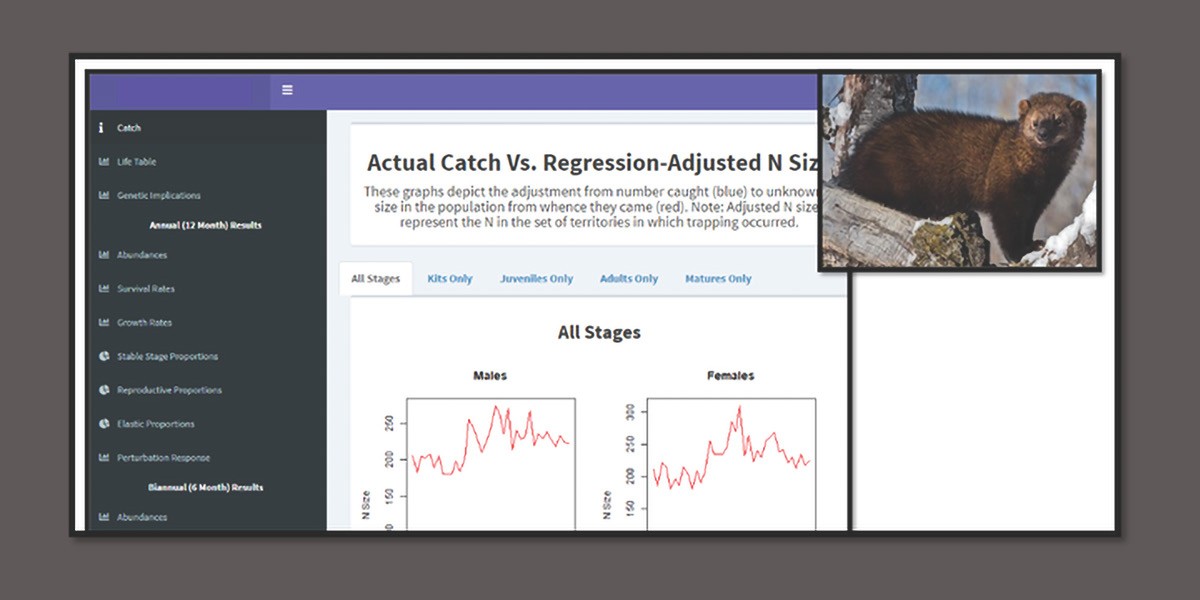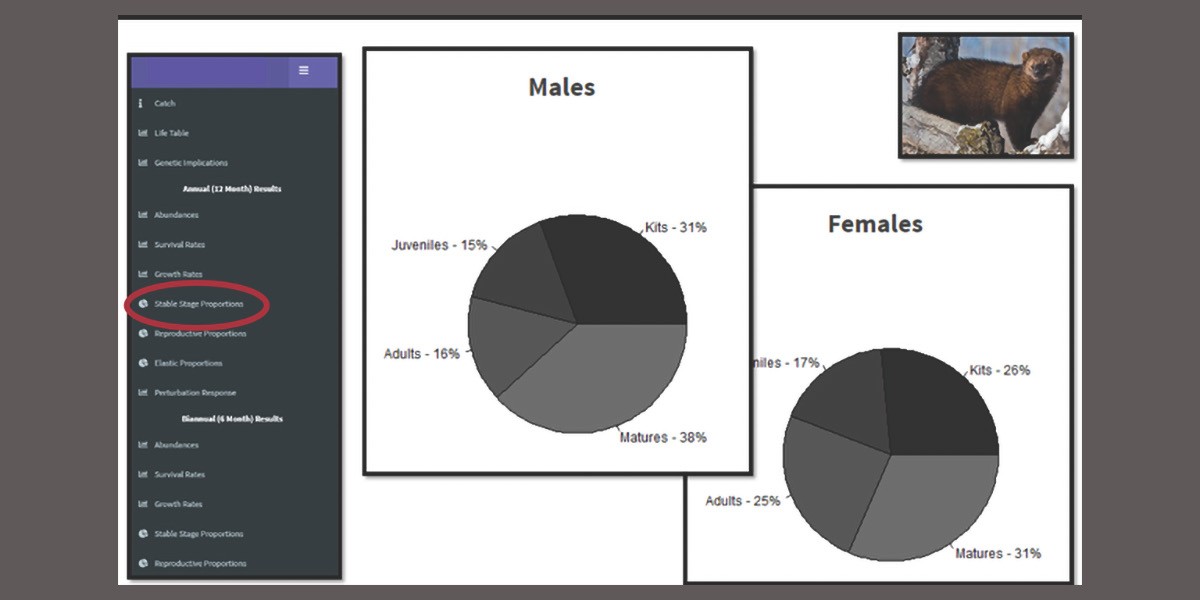Springboarding off our success in using novel statistical methods to evaluate the effects of lead on bald eagle populations in the northeast US, we are applying similar methods to data on furbearing species.
The tradition of trapping furbearing animals has a long history in New York State. Furbearer species include bobcats, fishers, martens, muskrats, and otters. Harvest reports from permitted trappers are used to collect data on age, sex, and location of animals. We are investigating whether we can use this limited trapping data in mathematical models to estimate the demographic structure of live populations, including population growth rates and stable stage distributions. If we are successful, managers may be able to use limited trapping data to identify how to balance trapping opportunities with species sustainability.
In addition, success in this project will provide us with the mathematical and computational framework needed to assess the population-scale impacts of emerging threats, such as disease outbreaks, climate change, or human actions. For example, we may be able to use our mathematical model in conjunction with necropsy data to investigate the impact of rodenticides on the survival and population growth of fishers in some areas.
We hope these models may be applicable to investigating population consequences for many wildlife species with limited available data.





